Soft white beaches, crystal clear water and all kinds of colorful fish: the Maldives are a paradise for nature lovers. But the islands are threatened by environmental damage and rising sea levels.
But simply avoiding the popular vacation destination will not solve the problem – tourism not only provides a livelihood for the majority of the island’s inhabitants, it also helps fund preservation projects. Here we introduce you to the Maldives and show you what a sustainable vacation in the Maldives can look like. In addition, we will introduce you to Gili Lankanfushi Eco Resort and other sustainable initiatives and projects.

The Maldives are in danger!
The Maldives consists of 26 atolls with nearly 1,200 coral islands. The capital, Male, one of the highest points in the archipelago, is only 2.40 meters above sea level. The islands are threatened for several reasons:
- By 2050, about 80 percent of the Maldives could be uninhabitable. This is what the Maldivian ambassador to the EU, Omar Abdul Razzak, says in this interview with FR.
- Rising sea levels threaten a large part of the country’s territory. The Intergovernmental Panel on Climate Change (IPCC) of the United Nations states in its IPCC report: “Sea levels will rise between 0.43m and 0.84m by 2100”. However, it also states that a rise of 2m by 2100 “cannot be ruled out”.
- Fresh water is extremely scarce in the Maldives. Natural freshwater is only available from freshwater lenses, which are drawn from wells. However, most freshwater is extracted from saltwater, which is an energy-intensive process. Rising sea levels and more extreme weather with flooding could make the few freshwater lenses salty and unusable.
- Earthquakes and tsunamis are a threat to the Maldives due to its geographical location (seismically active zone).
- Corals suffer from the warming of the oceans. Their death upsets the natural balance and affects the entire ecosystem.
- Marine debris is increasingly washing ashore in the Maldives, creating a huge garbage problem. (The NGO Parley, run by Shaahina Ali, is committed to tackling this problem).
As you can see, the problems of the Maldives are closely linked to climate change. So the most important thing you can do for the Maldives (even from home) is to live a generally sustainable life, keep your carbon footprint low, avoid waste and plastic, and support climate-friendly policies and projects.
Can a holiday in the Maldives be sustainable?
This question is probably asked by everyone who thinks about a trip to the Maldives. A long-haul flight to the islands in the Indian Ocean is an ecological problem. According to the German Federal Environment Agency, a flight from Germany to the Maldives and back has a “climate impact of about three tons of CO2 equivalents”. (This is the equivalent of driving a mid-range car about 15,000 kilometers). Nevertheless, we believe that travel to the Maldives should not be demonized.

Tourism is very important for the country. It is the main source of income. According to GIZ, the Maldives receives 90 percent of all tax and customs revenue from tourism. The money helps to clean the beaches of marine debris, build sea walls, promote renewable energy, etc.
Therefore, not traveling to the Maldives, or even banning travel to the Maldives, is not the answer. Instead, we advocate making a conscious decision to travel to the Maldives, addressing your impact as a tourist, and making your trip sustainable. We will show you how to do this using Gili Lankanfushi as an example.
Sustainable Maldives Vacation at Gili Lankanfushi
The sustainable luxury resort of Gili Lankanfushi consists of 45 eco-villas on the water and is committed to environmental protection (no disposable products, economical use of water and electricity) as well as social projects. These include purchasing local products, training staff, and supporting a school.

Maldives: A strong commitment to marine life
In addition to this commitment to everyday hotel life, there are many exciting environmental projects initiated and supported by the hotel. With Gili Veshi, Gili Lankanfushi has opened a marine biology center that promotes research and gives you the opportunity to get involved: Here you can participate in monthly coral reef clean-ups, help with seagrass planting, or assist with coral colonization.
If you want to learn more about Gili Lankanfushi’s sustainable diving projects, we already wrote about them on this blog article about sustainable diving vacation.
Close encounters with the greats of the sea
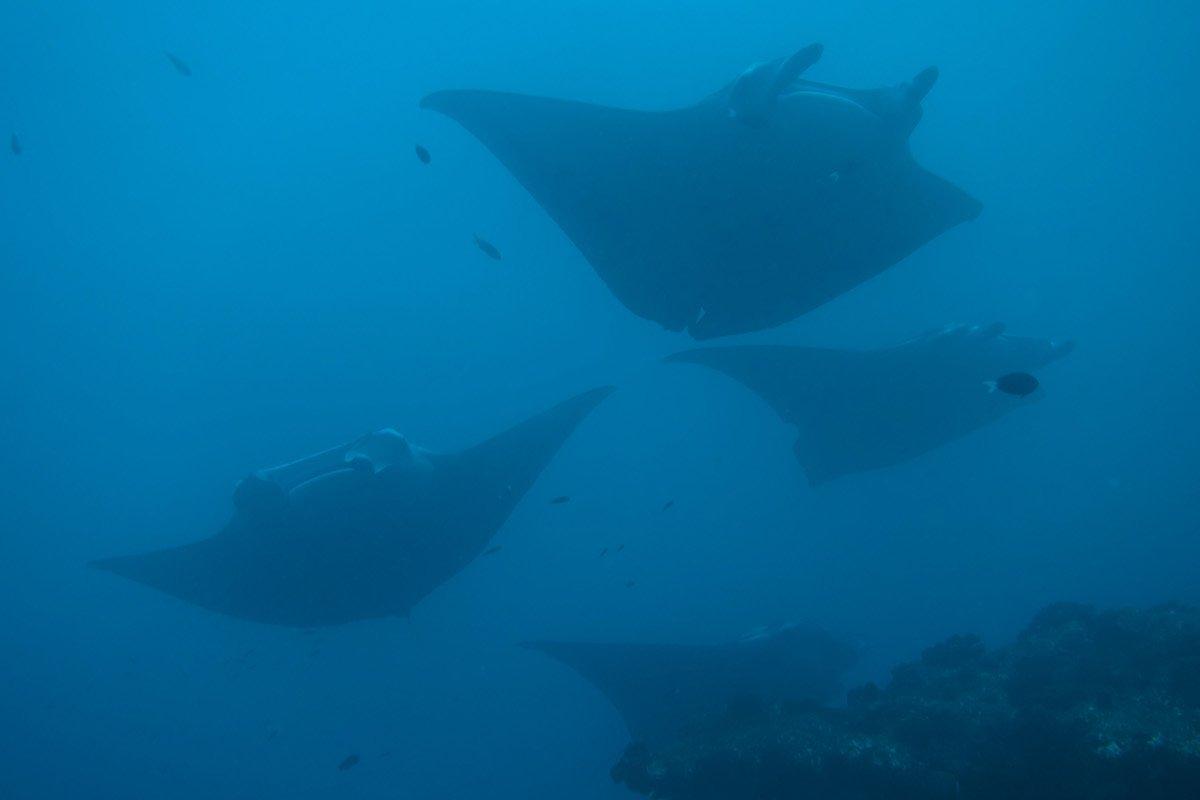
A special feature of the Maldives: With a bit of luck, even snorkelers can get close to whale sharks – at up to 13 meters in length, they are the largest sharks in the world – or be surrounded by majestic manta rays. One of the most famous sighting spots is Hanifaru Bay in Baa Atoll. During the western monsoon from May to November, plankton collects in the funnel-shaped lagoon and magically attracts the animals. Up to 200 manta rays and 20 whale sharks have been spotted here simultaneously! To protect the animals, resorts and dive centers in Baa Atoll have joined forces with the NGO BAARU, which sorts and disposes of marine debris.
Sustainable vacations in the Maldives: take action for the corals yourself
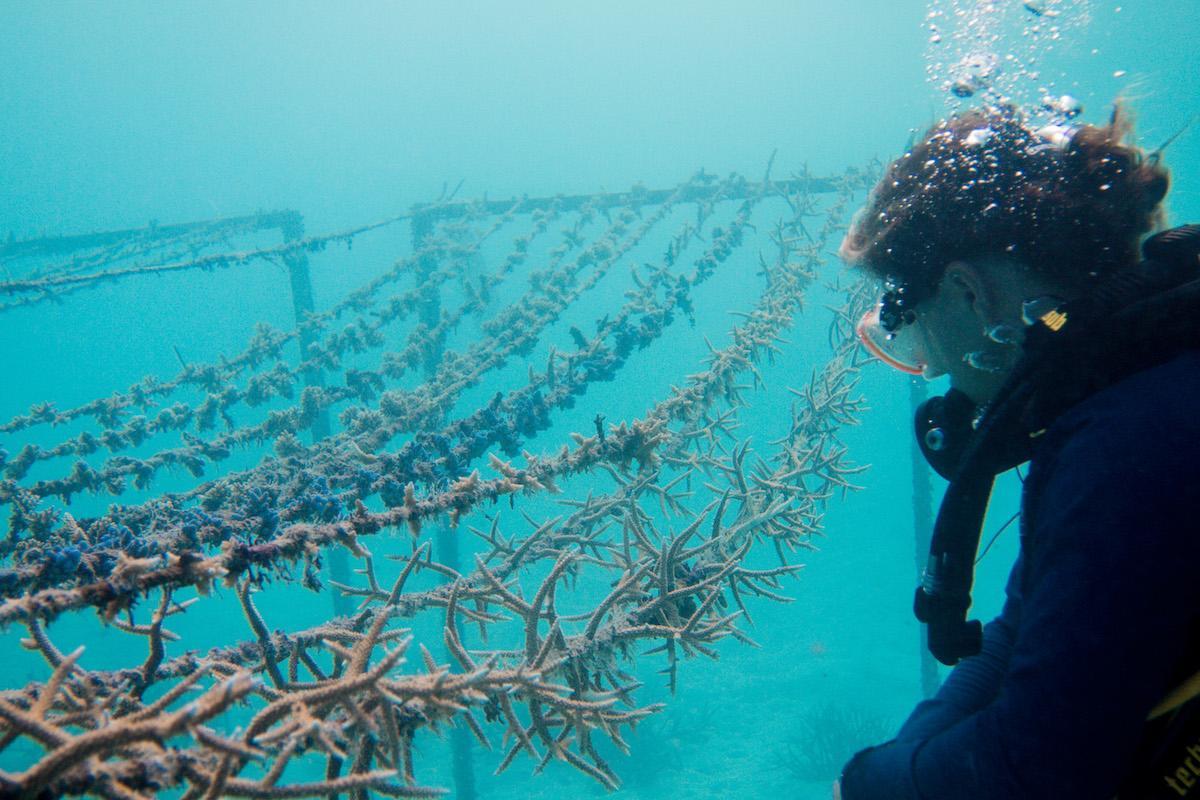
Without coral, the Maldives would not exist, as the islands are part of atolls, ring-shaped coral reefs. Only healthy reefs can help counteract the effects of rising sea levels and the sinking of islands into the sea. However, the effects of climate change and heavy pollution have already destroyed a large part of the reefs. As a result, some resorts are working on specific projects to help corals recover. At Gili Lankanfushi, you can watch marine biologists grow new corals and learn about these special creatures at regular lectures. As a scuba diver, you can also get involved underwater, for example by cleaning the Coral Lines.
Get to know the country and its people
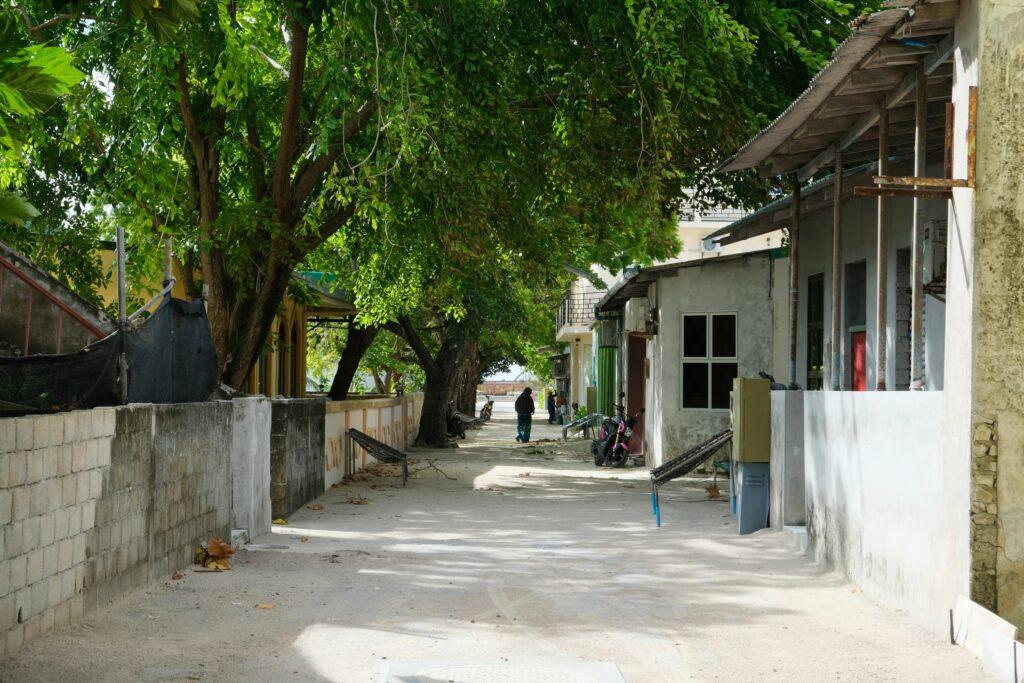
Most travelers do not know how people live in the Maldives. This is not due to the ignorance of the diving and swimming tourists (as one might think), but is a political decision. Since the Islamic country opened up to tourism in 1972, a clear distinction has been made between islands for tourists and islands for locals.
Contrary to what is often assumed in the West, Islam itself is a very tolerant religion. The motto is “Lakum Dinakum, wa lia Din” (for you your religion/way of life, for us our religion/way of life). This means that you can enter the Maldives as an unmarried couple, sunbathe in a bikini, drink alcohol, etc.
Originally, tourists were not allowed on native islands, and natives were not allowed on tourist islands, except as workers. This has since been liberalized.
Gili Lankanfushi is located in the North Malé Atoll. If you want to meet the locals, you can either go to the capital Male or take a boat trip to Dhiffuhi Island. About 1,000 people live here. There are three mosques, two schools, shops, cafes, a hospital, farming and fishing. Alcohol is forbidden here and although there is no legal dress code, you should dress more modestly out of respect (Men: shorts up to the knees, women: shoulders, neckline and knees covered).
A sustainable vacation in the Maldives is not just a nice-to-have
Luxury, palm trees, white beaches and a turquoise sea are the hallmarks of the Maldives. But this image is being threatened by unscrupulous tourism and reckless travel decisions. Sustainable travel to the Maldives (and other island paradises) is an absolute must. So if you decide to travel to the Maldives, plan a longer stay and get involved in a country that definitely has too much to offer for you to just visit the beach in front of your hotel 😉 .
This article is an update of January 2018
Read more: THE JOURNEY IS THE REWARD: REACHING THESE 5 ECO-HOTELS IS AN ADVENTURE
Save this post for your next vacation planning!
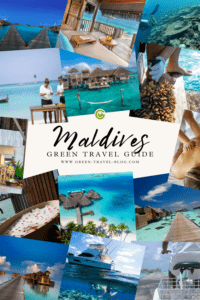
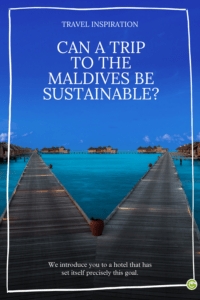
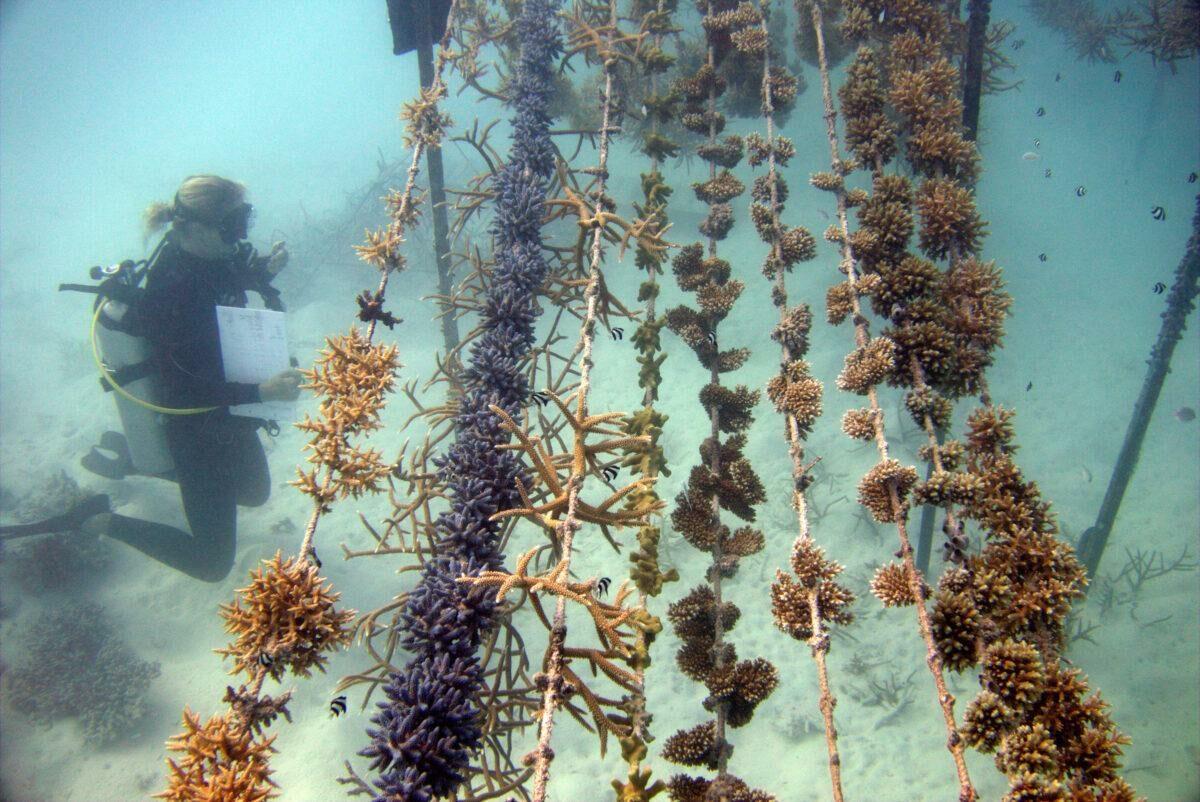

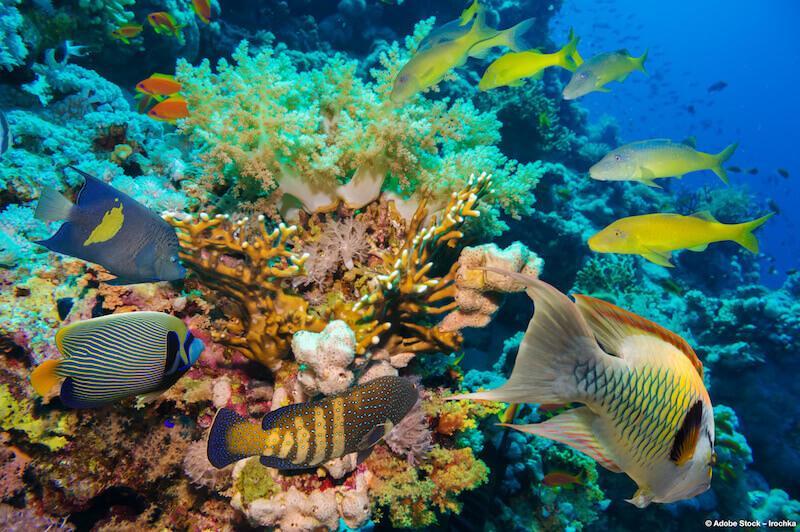


2 thoughts on “Of Manta rays and corals: Sustainable vacation in the Maldives”